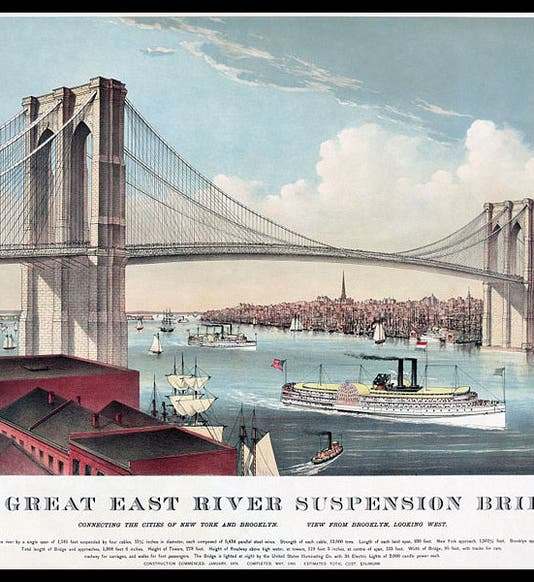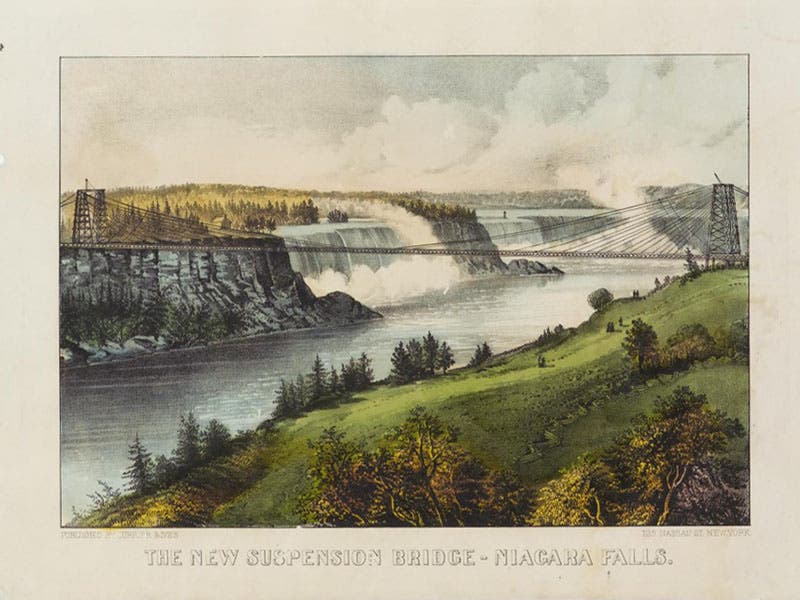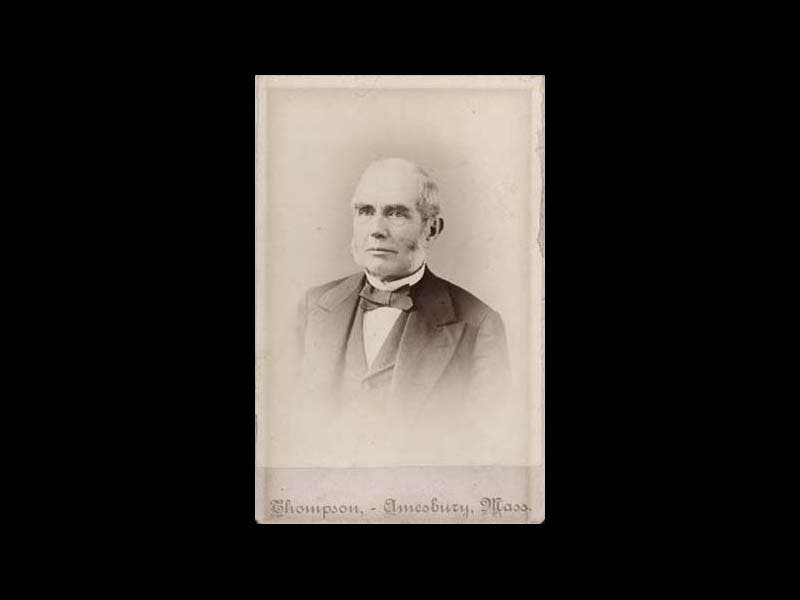Scientist of the Day - Nathaniel Currier
Nathaniel Currier, an American lithographer, was born Mar. 27, 1813. Lithography was a brand new printing technique when Currier came of apprentice age in the 1830s. He mastered the craft in Philadelphia and moved to New York, when he set up his own business, and in 1857 he teamed up with James Ives, who provided the necessary business expertise. Currier and Ives proceeded to flood the country with attractive colored prints. Many of the lithographs show scenes such as Christmas on the Farm, or Skating in Central Park, but quite a few are of interest to the historian of engineering and technology. For example, Currier seems to have liked bridges, and some of our best views of 19th-century American bridges are found in Currier & Ives prints. Currier did at least three lithographs of the East River Bridge, now usually called the Brooklyn Bridge, of which we see one here (first image). Before John A. Roebling tackled the East River, he spanned the gorge at Niagara Falls, and Currier gave us a splendid view of that as well (second image). He also left us a fine pastoral scene with the High Bridge of Harlem in the background, which was part of the Croton Aqueduct system completed in 1842 (third image).
Currier was also apparently fond of mechanical engineering, as many of his prints show trains and ships. We see a wonderful unspecified railway locomotive and train in one print, called simply The Express Train (fourth image), and another lithograph pictures the gargantuan ironclad steamship Great Eastern, which at the time of this print had not yet been used to lay the first successful Atlantic cable (fifth image).
Currier & Ives turned out over 7000 different prints of all aspects of Americana until Currier retired in 1880. There are over 750 of their lithographs available on the website of the Springfield Museums (Springfield, Mass.), from which we have drawn most of our images. We also present above a photographic portrait of Currier, taken from a carte de visite (sixth image).
Dr. William B. Ashworth, Jr., Consultant for the History of Science, Linda Hall Library and Associate Professor, Department of History, University of Missouri-Kansas City. Comments or corrections are welcome; please direct to ashworthw@umkc.edu.












